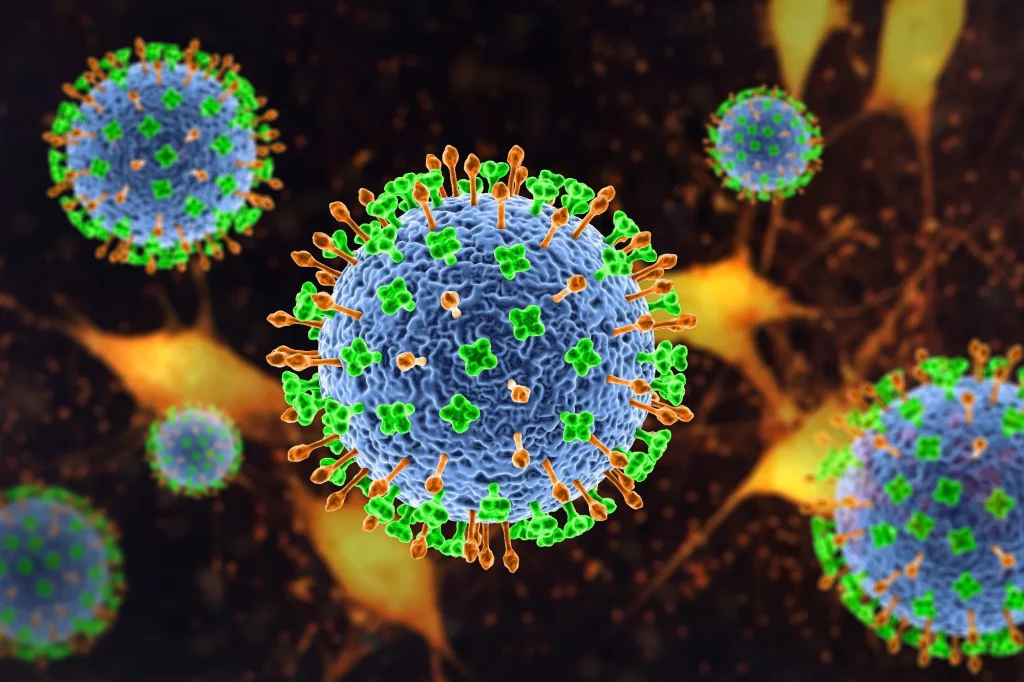Context:
The Institute of Advanced Virology (IAV) has devised a new method to generate Virus-like particles (VLPs), to help develop antibodies against Nipah.
Methodology adopted in developing VLPs:
- IAV scientists have invented a way of developing non-infectious Nipah VLPs in the lab, which imitate the wild Nipah virus (NiV).
- By doing this, the IAV team has advanced toward its goal of creating monoclonal antibodies and antivirals to combat NiV and related infections.
- In the current study, IAV scientists generated “HiBiT-tagged” Nipah virus-like particles (NiV-VLPs) using plasmid-based expression systems, encoding the NiV structural proteins G, F, and M.
The genome of the NiV encodes six major proteins: glycoprotein (G), fusion protein (F), matrix (M), nucleocapsid (N), long polymerase (L) and phosphoprotein (P). - The VLPs thus produced were morphologically and functionally identical to the native virus.
About Virus-like particles (VLPs):
- VLPs are molecules that closely resemble and mimic viruses, but are non-infectious because they contain no viral genetic material.
- VLPs have long been recognised as effective quantitative platforms for studying viral binding and entry kinetics of the virus.
- With the advent of NanoBiT technology and HiBiT technology (HiBiT is an 11 amino acid peptide ), scientists made Nipah VLPs tagged with HiBiT.
hese VLPs look and act just like the real virus. - Adding the HiBiT tag on these VLPs boosts their usefulness for testing antiviral drugs and making vaccines.
How VLPs will accelerate the research further:
- Nipah virus is a dangerous infection with a high fatality rate, because of this, Research on it has been limited due to safety concerns.
- The new method provides a better method to develop neutralizing antibodies against NiV in a biosafety level -2 (BSL) laboratory.
- Traditionally, tests for developing Nipah virus neutralizing antibodies (vaccines) require high-security labs (BSL-4), but now, using Nipah virus-like particles (NiV-VLPs), these tests can be done safely in less secure labs (BSL-2).
About Nipah Virus:
- The zoonotic virus Nipah is a highly pathogenic paramyxovirus, with a fatality rate of up to 80% in affected humans.
- It spreads to humans from animals, mainly through fruit bats.
- It was first found in 1998 in Nipah (Malaysia).
- There’s no vaccine for humans or animals yet.
- The symptoms of Nipah are similar to those of influenza: fever, muscle pain, and respiratory problems.
- Treatment focuses on supportive care, like ribavirin for symptoms.
- Patients need hospitalization and isolation to prevent spreading it to others.

